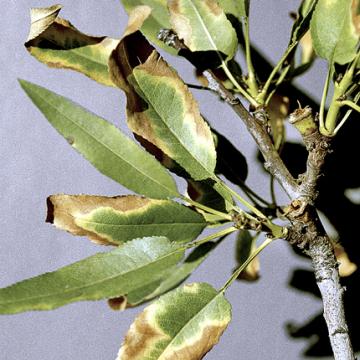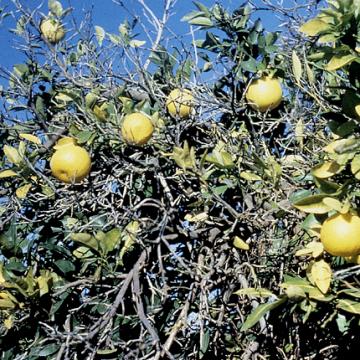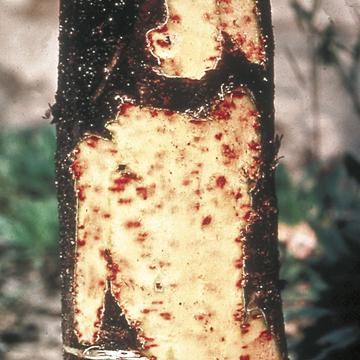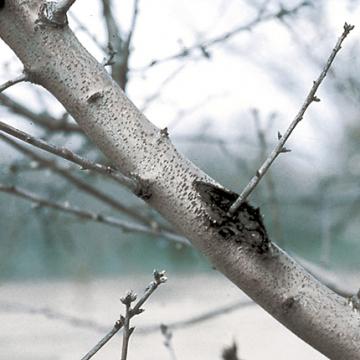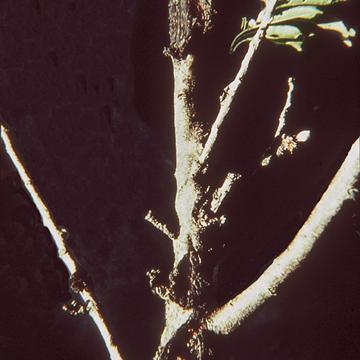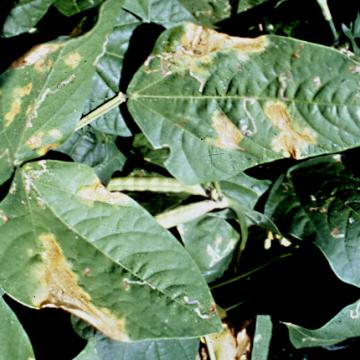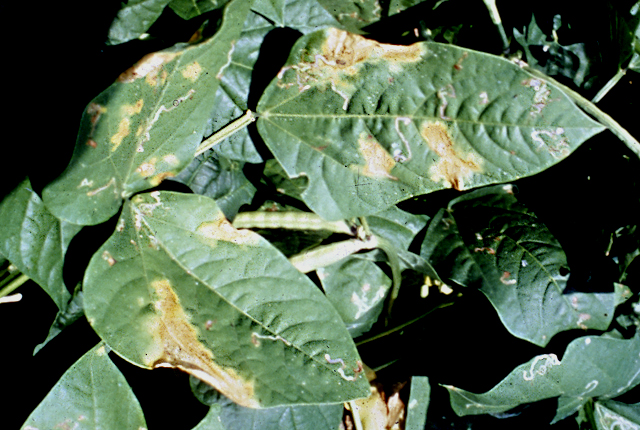DISEASE: Almond leaf scorch
HOST: Almond
Light brown necrotic (scorched) areas on curling leaves.
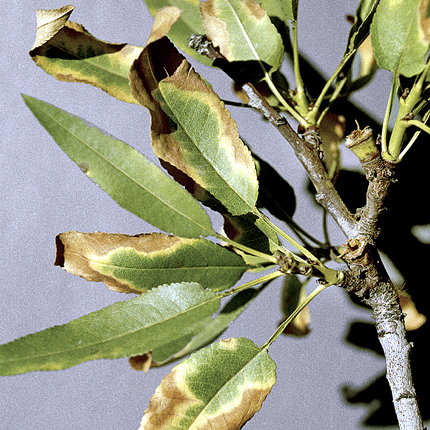
Almond leaf scorch | Almond
DISEASE: Almond leaf scorch
HOST: Almond (Prunus dulcis)
PATHOGEN: Xylella fastidiosa
SOURCE: W. Sinclair
DISEASE: Almond leaf scorch
HOST: Almond
Dying almond trees with scorched appearance. Initial symptoms are marginal chlorosis, usually late in the year. Scorch often is first noted at leaf tips, symptoms worsen, and terminal branches may die.
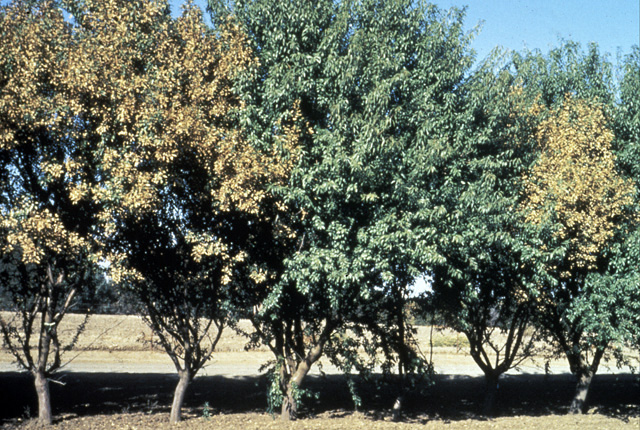
Almond leaf scorch | Almond
DISEASE: Almond leaf scorch
HOST: Almond (Prunus dulcis)
PATHOGEN: Xylella fastidiosa
SOURCE: R. Davis, M. Davis
DISEASE: Australian citrus dieback
HOST: Citrus (Lime)
Severe decline, a late stage of disease. The disease spreads slowly in mature trees, progressing faster in young trees.
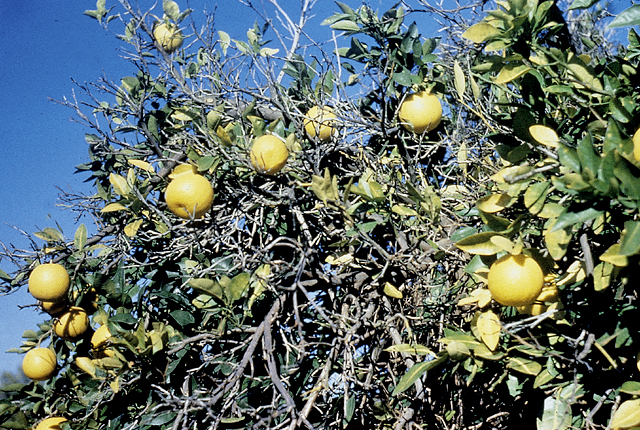
Australian citrus dieback | Citrus (Lime)
DISEASE: Australian citrus dieback
HOST: Citrus (Lime) (Citrus sp.)
PATHOGEN: 'Candidatus Phytoplasma australiense'
PATHOGEN SYNONYM: Phytoplasma Stolbur group
SOURCE: P. Broadbent
DISEASE: Bacterial blast and black pit
HOST: Citrus (Lime)
Characteristic symptoms of brownish black lesions on twigs and leaves (blast), starting with infection of petioles. Black pit refers to brown to black sunken spots on fruit, 5 to 20 mm in diameter.
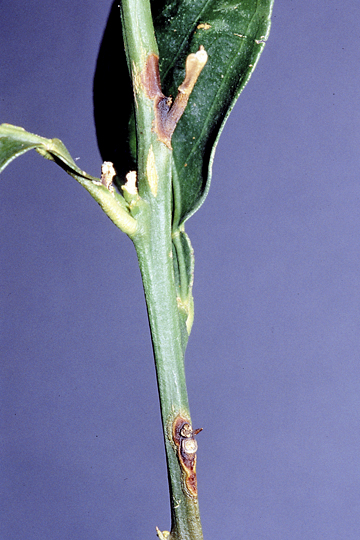
Bacterial blast and black pit | Citrus (Lime)
DISEASE: Bacterial blast and black pit
HOST: Citrus (Lime) (Citrus sp.)
PATHOGEN: Pseudomonas syringae pv. syringae
SOURCE: P. Broadbent
DISEASE: Bacterial canker
HOST: Almond
Infected tissues with reddish necrotic spots, a key diagnostic symptom for the disease. Spots and streaks are commonly seen when bark is removed.
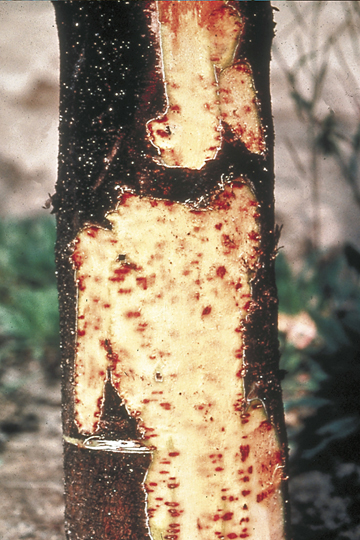
Bacterial canker | Almond
DISEASE: Bacterial canker
HOST: Almond (Prunus dulcis)
PATHOGEN: Pseudomonas syringae pv. syringae
SOURCE: B. Teviotdale
DISEASE: Bacterial canker
HOST: Almond
Diamond-shaped canker on infected limb. Such cankers are common on small limbs and spurs.
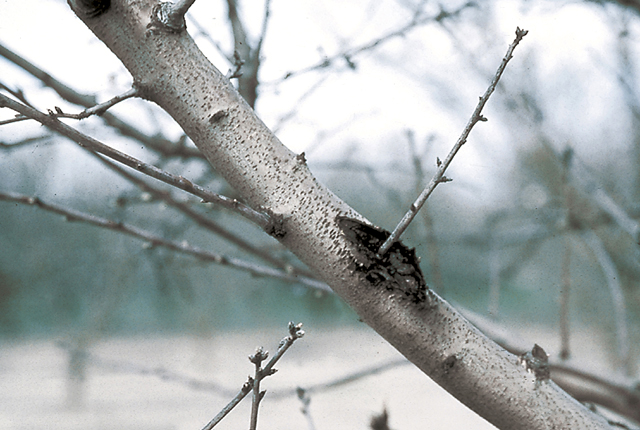
Bacterial canker | Almond
DISEASE: Bacterial canker
HOST: Almond (Prunus dulcis)
PATHOGEN: Pseudomonas syringae pv. syringae
SOURCE: B. Teviotdale
DISEASE: Bacterial hyperplastic canker
HOST: Almond
Diseased tree with multiple cankers. Margins of cankers are rough, soft, cheesy, dark brown, and have scalloped water-soaked spots that turn brown. Multiple cankers may girdle and kill small twigs.
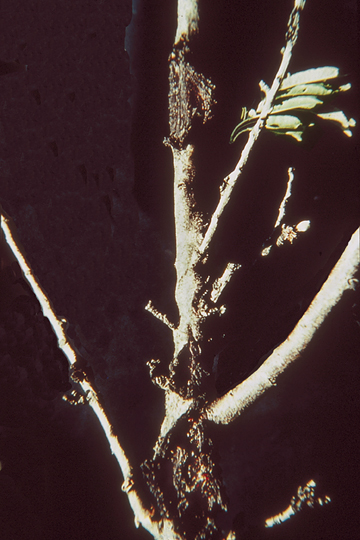
Bacterial hyperplastic canker | Almond
DISEASE: Bacterial hyperplastic canker
HOST: Almond (Prunus dulcis)
PATHOGEN: Pseudomonas amygdali
SOURCE: P. Psallidas
DISEASE: Bacterial leaf spot
HOST: Cowpea
Leaf spots vary in size from small to large and some fall out in time, leaving a shot-hole appearance.
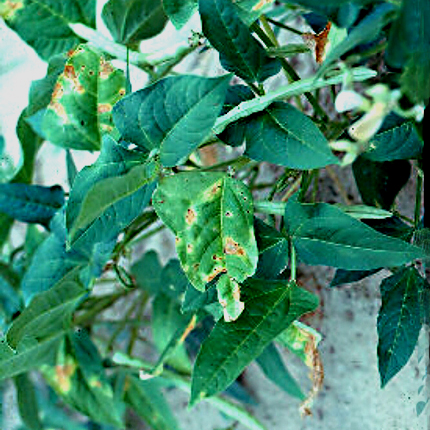
Bacterial leaf spot | Cowpea
DISEASE: Bacterial leaf spot
HOST: Cowpea (Vigna unguiculata)
PATHOGEN: Xanthomonas axonopodis pv. vignicola
PATHOGEN SYNONYM: Xanthomonas campestris pv. vignicola
SOURCE: R. Gitaitis


